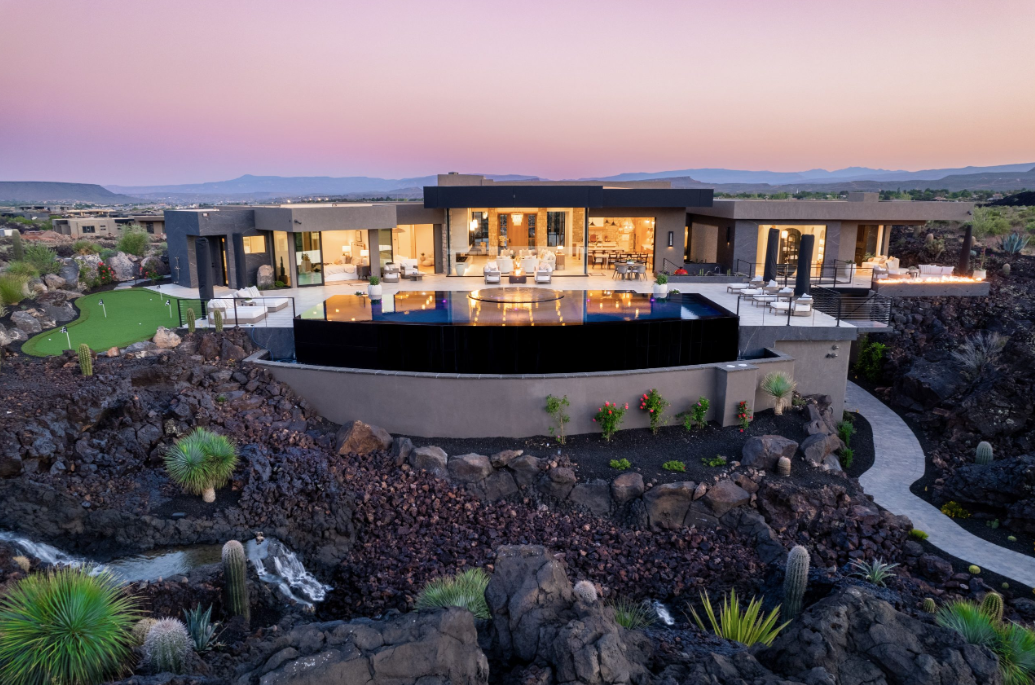77 / 100 Powered by Rank Math SEO SEO Score The art of creating the ideal living space has evolved significantly, transitioning from purely aesthetic design to a harmony of form and function tailored to
- Exploring the rising trends in modern home design.
- Understanding sustainable construction materials and energy-efficient solutions.
- Evaluating the integration of smart home technologies for enhanced living.
- Creating adaptable and multifunctional spaces within the home.
- Anticipating the future direction of home design innovations.
The art of creating the ideal living space has evolved significantly, transitioning from purely aesthetic design to a harmony of form and function tailored to the unique preferences of each occupant. A thoughtfully crafted custom home design now encompasses many innovative elements that foster environmental friendliness and technological sophistication. This guide will walk you through the cutting-edge features that are molding the landscape of modern custom homes—a vision moving beyond mere beauty to encapsulate sustainability, adaptability, and a seamless tech-integrated lifestyle.
Trends Shaping Modern Home Design
In recent years, the rise of custom home design, spearheaded by innovative custom home builders, has been marked by a paradigm shift towards embracing novel architectural trends. These days, architects and homeowners alike gravitate toward an approach that balances the environmental footprint with the domestic experience. Smart home features with automated systems are now a staple in contemporary design, offering homeowners control over their living spaces like never before. Eco-consciousness has transitioned from a fringe interest to a mainstream priority, infusing design choices with a sense of social responsibility. As consumers become more knowledgeable, the industry adapts, and homes become more sophisticated and attuned to long-term sustainability goals.
Sustainable Materials and Construction Techniques
One of the most influential movements within the housing market is the shift towards green building materials and eco-effective construction methodologies. Utilizing resources such as reclaimed wood, efficient low-emission windows, and photovoltaic panels, the modern custom home transforms into a beacon of sustainability. Construction techniques are also revolutionizing, leaning towards prefabrication and modular design, which minimize waste and enable better precision and quality control. The result is homes that consume less energy, reduce environmental impact, and offer healthier living environments while maintaining architectural integrity and aesthetic appeal.
The Role of Certifications in Sustainability
The surge in sustainability has been matched by the development of various certification programs designed to ensure that green building standards are met and maintained. By adhering to certified guidelines, custom homes earn credibility for their environmental performance—often translating into cost savings over time, thanks to greater energy efficiency and durability. Programs like LEED have become distinguished markers of a building’s sustainable profile, assuaging homeowners that their investment yields a reduced carbon footprint without sacrificing quality or luxury.
Smart Home Technology Integration
Smart home technology integration continues redefining what it means to inhabit space. From advanced security systems to thermostats that learn and adapt to a family’s routine, these innovations redefine the idea of “home sweet home.” Artificial intelligence, machine learning, and the Internet of Things (IoT) are weaving together to create environments that not only respond to verbal commands but anticipate needs and provide solitarily tasks, bringing about anticipated convenience and efficiency. The latest industry news vividly documented this movement towards a more intelligent home.
Maximizing Indoor Comfort and Well-being
The intrinsic value of a home lies in its ability to shelter its inhabitants and enhance their overall well-being. The cutting-edge custom home design pays special attention to the health and comfort of residents. Architectural choices have expanded to include air and water purification systems, incorporating natural light through skylights and large windows, and using soundproof materials to craft a soothing acoustic ambiance. These innovations serve the dual purpose of creating spaces that inspire peace and tranquility while promoting its residents’ well-being.
Beyond Aesthetics: Health-Driven Design Choices
Current trends herald a future where home design transcends visual beauty to focus on physical and mental health. Non-toxic building materials, ergonomic furniture, and layouts that encourage movement and accessibility are increasingly paramount to a design’s success. Whether through integrating biophilic elements that connect residents to nature or featuring adaptable room layouts for improved work-life balance, health-driven home design is becoming an essential part of the modern custom home blueprint.
Enhancing Outdoor Living
High-end custom homes today are complete with well-integrated outdoor spaces that offer the luxuries of the indoor environment. Designers are pushing boundaries to create outdoor living areas with sophisticated features—be it plush seating that withstands the elements, outdoor speaker systems for entertainment, or top-of-the-line cooking stations for gourmet alfresco dining. These spaces extend the living area, creating welcoming environments perfect for relaxation and social gatherings, encapsulating the essence of a luxurious lifestyle grounded in connectivity with the outdoors.
Adaptable Spaces for Multifunctional Use
Adaptability in home design has proven to be a defining trend of the last decade. Custom homes now illustrate the beauty of versatility through spaces designed to serve various functions. Convertible furniture, hidden storage, and innovative room dividers all play their part in creating spaces that adapt to the shifting demands of homeowner lifestyles. These multifunctional areas smartly cater to various activities, showcasing the power of thoughtful design in addressing the dynamic nature of contemporary life.
Looking Ahead: The Future of Home Design
Homes are no longer just dwellings but interactive, adaptable, and environmentally friendly spaces. Eco-friendly materials, intelligent technologies, and flexible living spaces are setting the stage for the future of homes. The homes of tomorrow will blend luxury, efficiency, and intuitiveness to create a new domestic landscape, transforming how we live and interact with our surroundings. Conscientious homeowners seeking to learn more about sustainable home construction can find abundant information through the U.S. Green Building Council, which provides in-depth insights and research on green building practices. Here, individuals can discover the benefits and science behind creating homes that contribute positively to their surroundings, ensuring a more sustainable and vibrant future for homebuilding.
